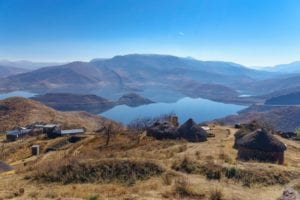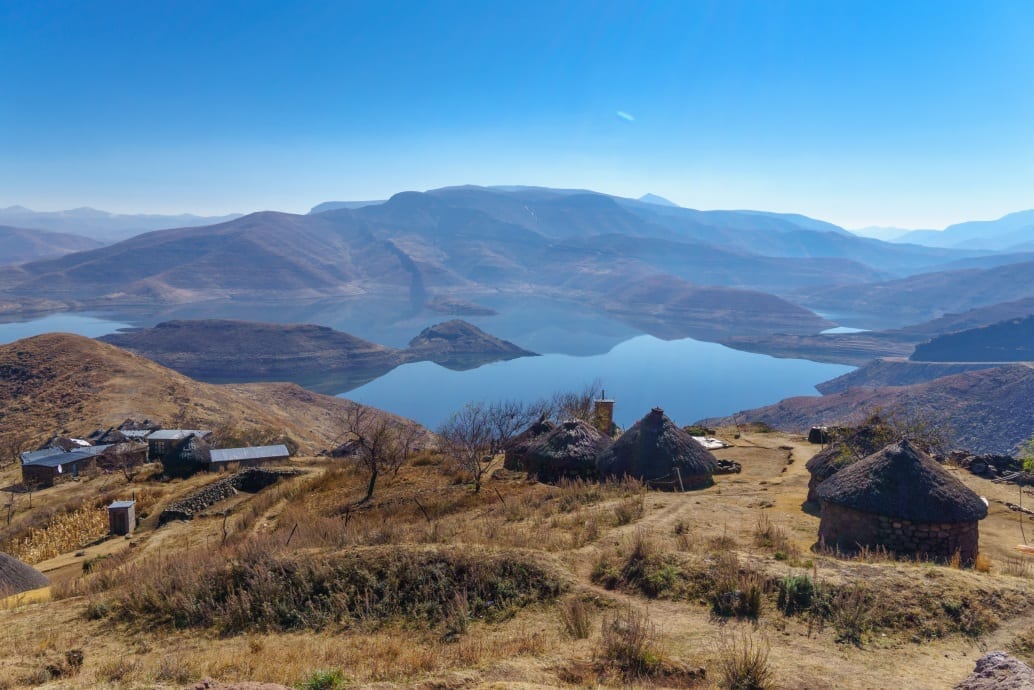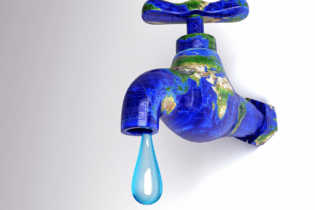facilities, as well as environmental and social programmes. On completion of Phase II, the new Polihali Dam will connect to Katse via a
new 38 km tunnel. From there onwards,
the water will pass through the existing Phase I system, generating hydroelectric power in the process. What form will the Polihali Dam take?
Polihali will be a concrete-faced rockfill dam. The design will be similar to Mohale Dam, which has a 145 m high wall. However, the new dam will be higher by approximately 20 m.
Polihali will have a crest length of 915 m with a width of 10 m. The live storage capacity will be around 2 322 million cubic metres, with a reservoir surface area at FSL of 50.4 km2. When will full commissioning of the Polihali Dam take place? We are looking at a five- to six-year programme. So, by 2025, we should be able to fully commission the water transfer component. According to the 2009 Phase II feasibility report, the full yield is expected to be utilised by approximately 2030. What will be the combined capacity once Phase II is completed? The current capacity for Phase I is around 25 m3/s. Phase II at full capacity will add an additional 15 m3/s, so we are talking around 40 m3/s in terms of annual yield. Phase I currently delivers around 780 million cubic metres per annum to South Africa. Phase II will increase the yield to 1 270 million cubic metres annually. What plans are in place for the proposed Kobong 1 200 MW pump storage scheme in Phase II? This is a solution that was identified during the feasibility study. However, the findings were not conclusive. Technically, the potential is definitely there, but Lesotho needs to carry out further studies to confirm its viability. Further hydropower feasibility studies are in progress. These include geotechnical investigation at the site, a market study to confirm who the buyer of surplus power would be, an integration/transmission study for the powerline that will evacuate and deliver the power to its intended destination, and the conclusion of a power purchase agreement and power sales agreement to ensure that the projectis bankable. After commissioning of Phase I, Lesotho was self-sufficient. However, due to positive macroeconomic growth, current demand has outstripped supply regarding the existing hydroelectric plant. That’s why it’s important that Phase II augments what Lesotho already has, so that electricity imports from South Africa can be reduced. So, aside from the proposed pump storage, we are investigating where the existing Lesotho Highlands infrastructure can be used to generate more power for Lesotho. How will Phase II impact positively on Lesotho’s GDP? Phase I had a very positive impact on Lesotho’s economy, and we are excited about the further potential both during construction and after the completion of Phase II. Further improvements in infrastructure will enhance ease of travel in the mountains, promoting commerce and especially tourism, which is one of our major GDP contributors. Will there be a Phase III? That will be informed by the Planning Department within South Africa’s Department of Water and Sanitation and an agreement between the parties (Lesotho and South Africa). Once Phase II is fully operational, the future water demands and requirements will become clearer. This will be strongly influenced by the water demand projections in South Africa, and more specially, the growth projections anticipated by the Gauteng province, the primary water user of the scheme and currently Africa’s largest economy in terms of GDP. In the meantime, we believe that during the course of 2017, we will see earthmoving machines breaking ground on one of the first construction projects in Phase II. Everyone has been waiting for this and we are confident that Phase II will be a huge success for both Lesotho and South Africa.









